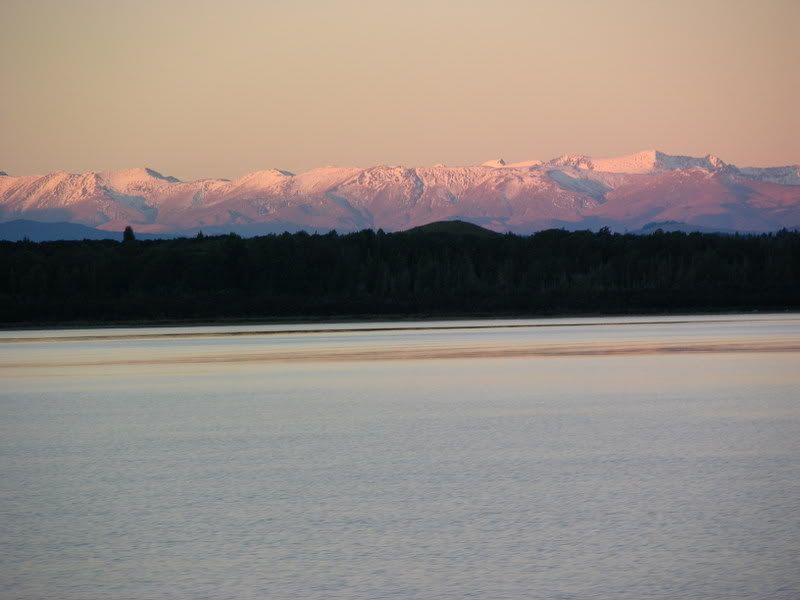 Crossing Wilmot Pass on the Way to Doubtful Sound. Wilmot Pass has some of the most amazing moss. This photo has Silver Beech Trees in the fore ground (more on my love affair with the Beech later) and the Southern Alps in the background.
Crossing Wilmot Pass on the Way to Doubtful Sound. Wilmot Pass has some of the most amazing moss. This photo has Silver Beech Trees in the fore ground (more on my love affair with the Beech later) and the Southern Alps in the background.
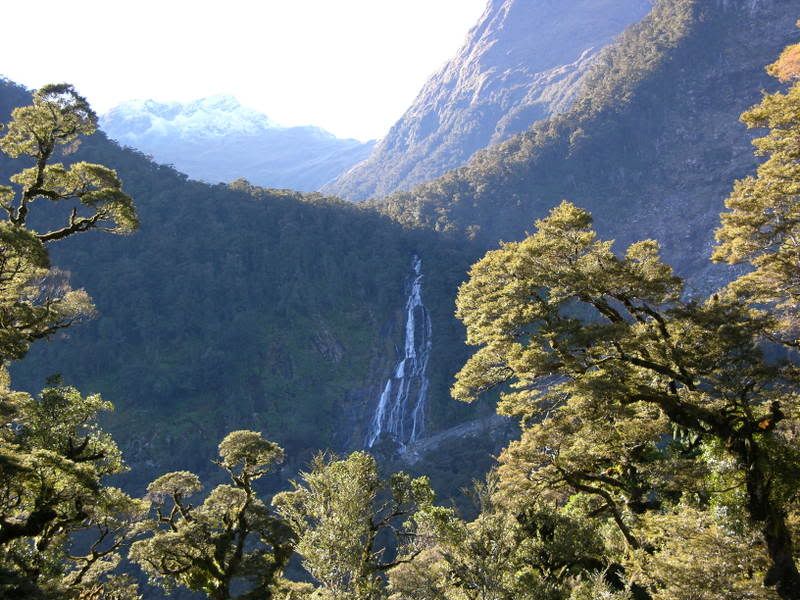
Looking down into Doubtful Sound which is actually not a Sound but a Fiord. "A fiord is a glaciated valley - typically narrow and steep-sided - that has been flooded by the sea after the glacier’s retreat. A sound, on the other hand, is a river valley flooded by the sea following a rise in sea levels or depression of the land, or a combination of both."
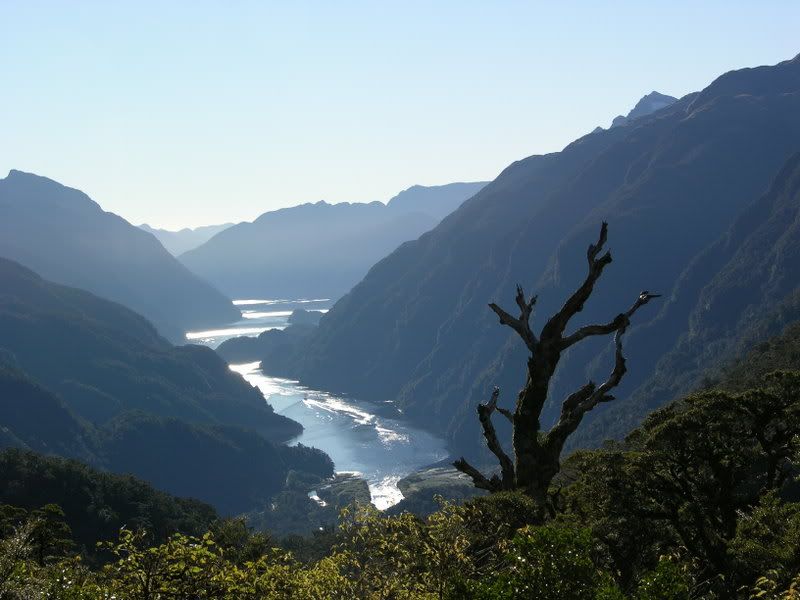
Water falls from mountain streams that are always high with rain water and pour down the mountain sides everywhere.
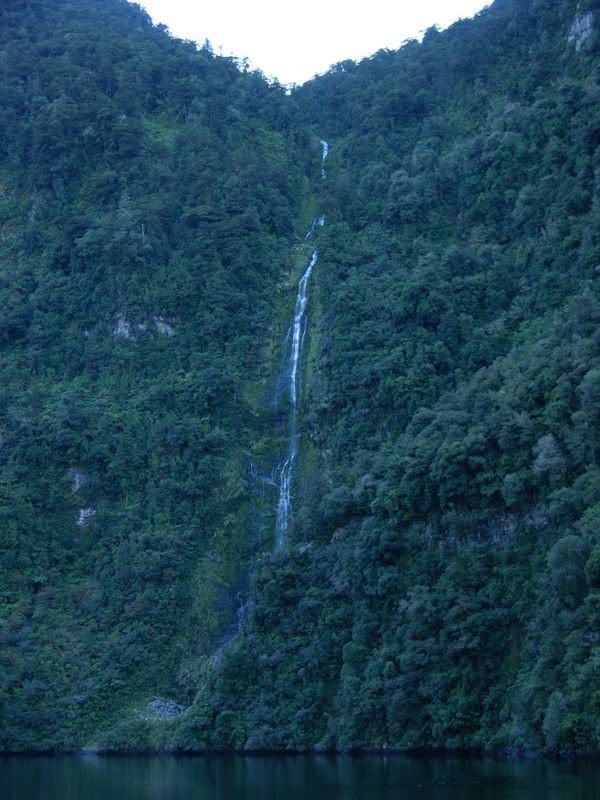
I would like to announce my nomination of the Silver Beech tree as the premier survivor under adversity. We all have on our most revered lists the pre Madonna’s that when given the exact measure of all of its desired elements will grow into a specimen usually just a limb shy of our dreams. All too often in the plant world the rugged survivor under the right conditions can be given the ugly title of being a thug, a pest, or invasive. As if these prejudices weren’t enough it is the rugged survivor that also faces the condescending sneers from those who judge a plant based solely on beauty. I will be rambling on for days attempting to not only state by case for the beech tree but in the process discuss the three different types of native forest in New Zealand and primarily the lowland native forest of Fiordland, the weather, geology, other plant types, and anything else you might be interested in. PLEASE throw me a bone and let me know if there is anything your interested in. kt
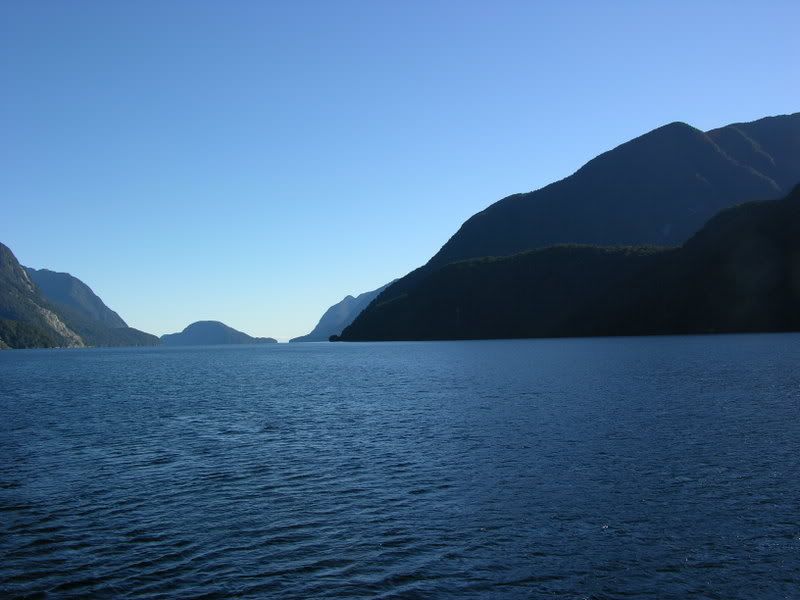
Silver Beech lowland native forest at altitude where forest ends and alpine forest takes over (brown colored area). The trees and other plants that grow in alpine forests are adapted to survive the cold. Trees growing in alpine areas will not often grow as tall as the same species would grow in a lowland forest because of the colder climate and wind. The alpine forest areas have diverse plants that I will share with you later.
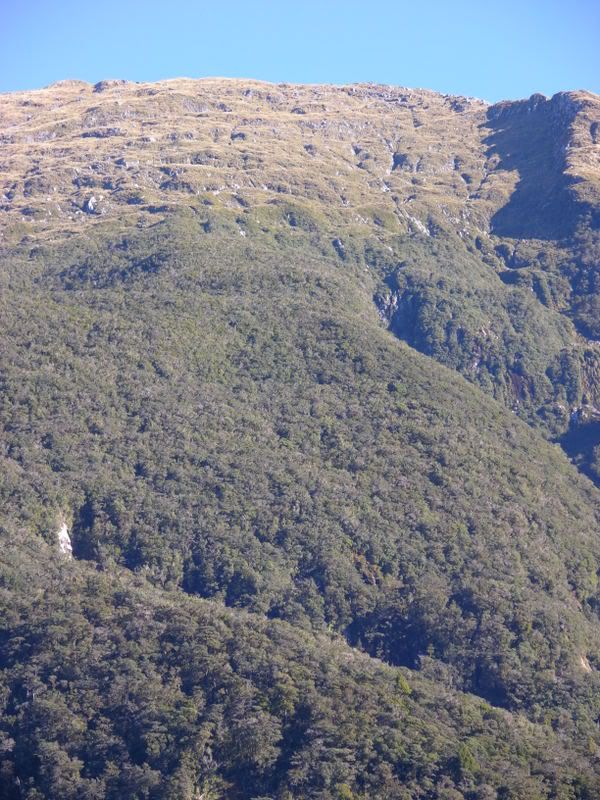
Tree avalanches are a common occurrence with little other than a few cracks in the steep granite for the roots of a mature tree to hold it in place often a rain or snow storm will blow over a tree and then like a domino effect everything below the fallen tree goes too.
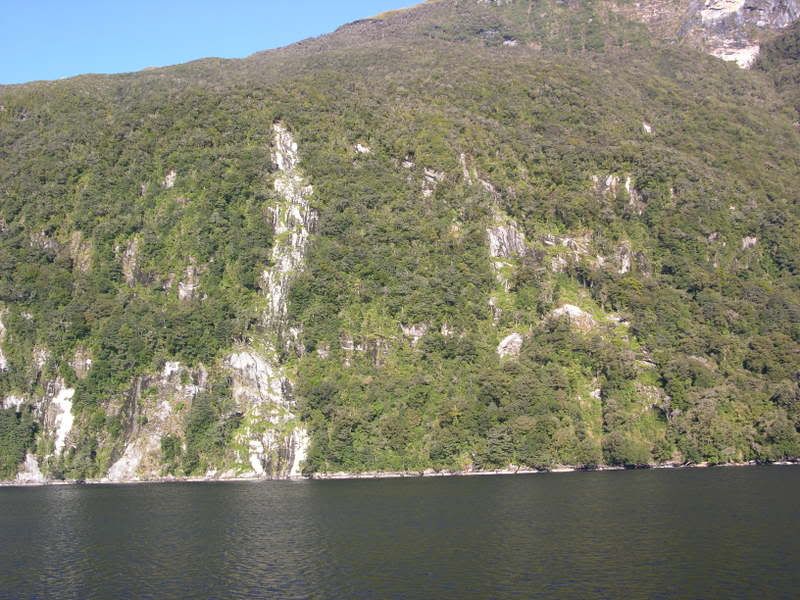
Almost immediately moss, lichens, and hardier shrubs start growing and lay the foundation for the forest’s regeneration by acting as a propagating bed for larger forest trees.

There is plenteful marine life in doubtful sound regardless of the fact that the top two feet of the fiord is fresh water from the constant rain and ever flowing streams. A pod of bottle nose dolfins calls Doubtful Sound home.

Areas such as this bowl create unique micro climates filled with diverse plant life.

A rare opportunity to capture and play with the sun light in the wet west.

It is believed that between 105 and 45 million years ago the ancient supercontinent of Gondwana, broke up into Africa, South America, India, Australia-New Guinea, New Zealand, and New Caledonia. During this time period Podocarpaceae which is a large family of 18-19 genera and about 170-200 species of evergreen trees and shrubs all considered conifers were prominent throughout Gondwana. Podocarpaceae grown primarily on the south islands west coast amongst the primarily silver beech forest. The destruction to podocarpaceae by invasive pests such as possum and deer is increasing at an alarming rate.
 Navigating through one of three largest fingers that make up the Doubtful Sound (fiord) towards the opening to the Tasman Sea. It is the rare day that it is not raining in Fiordland as moist westerly airstream's blow across the Tasman and crash into the high land mass of the southern alps and drop buckets of never ending rain before continuing east across dry regions of New Zealand. My camera is grateful for the chance to dry off and the only bit of travel advice I would have to offer you is don’t go to NZ without a WATER PROOF CAMERA. Note that in the still waters we are beginning to notice the reflective mirror effects of tannin in the water.
Navigating through one of three largest fingers that make up the Doubtful Sound (fiord) towards the opening to the Tasman Sea. It is the rare day that it is not raining in Fiordland as moist westerly airstream's blow across the Tasman and crash into the high land mass of the southern alps and drop buckets of never ending rain before continuing east across dry regions of New Zealand. My camera is grateful for the chance to dry off and the only bit of travel advice I would have to offer you is don’t go to NZ without a WATER PROOF CAMERA. Note that in the still waters we are beginning to notice the reflective mirror effects of tannin in the water.

The dark tannins in the water have stained the rock like a glass of red wine on a white table clothe. Although there are tidal changes in the fiord it is minimal.

*Note to get a sense of scale there is a dive boat in the photo try and find it. Hint it is white.
Doubtful Sound is unusual in that it contains two distinct layers of water that do not mix. The top few feet is fresh water, fed from the high waterfalls from the surrounding mountains and of course the never ending rainfall. Below this is a layer of cold, heavy,saline water from the sea. The difference in refractive index between these two layers makes it difficult for light to penetrate. This creates a mirror like quality to the water that photographers and scuba divers love. There are many deep-sea species, such as black coral that will grow in the comparatively shallow depths of the Sound.



 This red moss growing on a sheer rock along the edge of the road in Wilmots Pass took my breath away
This red moss growing on a sheer rock along the edge of the road in Wilmots Pass took my breath away 



No comments:
Post a Comment